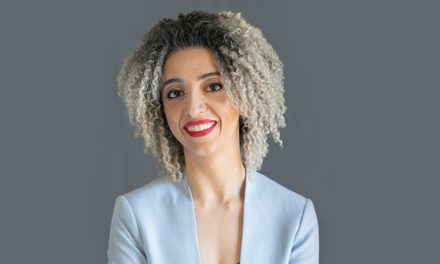Richmond startup helmet company Brainguard may revolutionize head protection.
If you chanced upon a skull one day, like Hamlet, you might be surprised by what it looks like inside. While the upper half is the smooth inner eggshell that most of us imagine, the lower half starts out smooth at the back, then rises in a series of bony protrusions, sharp ridges, and outcroppings. Features that could cause serious damage if something delicate — like a brain —banged into them.
An evolutionary blunder? Something that should have been edited out of the human gene pool in a previous epoch?
“It’s a good design — and a bad design,” observed Robert Knight, who has studied the brain for four decades as professor of psychology and neurology at UC Berkeley. On the good side, Mother Nature has managed to pack the entire operating system of the human body into a sphere the size of a small bowling ball so we don’t topple over every time we try to stand. On the bad side, such super-efficient packaging leaves the human brain extremely vulnerable to the kind of high-impact collisions (car accidents, football tackles) alien to the Pleistocene landscape where it evolved.
So how can we protect our imperfect cranial inheritance? From gladiators to offensive guards, the answer has been the helmet. But the helmet, whether ornate bronze or sleek plastic, is a flawed shield; too many heads end up dazed or cracked. The problem, according to Knight, is its single-shell design, which allows much of the force to pass through to the brain — especially rotational force, the most dangerous kind. His answer: add another layer. Eight years ago, Knight and a Berkeley colleague, Ram Gurumoorthy, invented and patented a new double-shelled helmet. An outer shell is connected by struts to the inner shell. When the helmet is struck, the outer layer rotates. The struts absorb and dissipate much of the force, and the inner layer remains stationary, protecting the brain. Their novel idea morphed into Brainguard, a small Richmond startup. Brainguard has the potential to help not only our helmeted NFL heroes, but the most common and vulnerable of modern gladiators — our kids.
Brain injury falls into two main categories. First is the single, acute injury — the bike fall, the car accident. Second is the repetitive, low-level injury — the football tackle, the whack from a hockey stick. Acute injuries can bruise the brain, causing blood clots, serious concussion or, if the head is snapped violently, tearing the clusters of long connective fibers that transmit information between different parts of the brain.
Repetitive low-level blows cause a different, but equally serious type of injury. The frontal lobe — the brain’s command center and site of our executive function skills — sits directly over the jagged topography of the lower skull. When the head is hit by a 30 g-force blow, equivalent to your average lineman’s tackle, the brain is jolted from its resting position. The frontal lobe bounces against the sharp edges of its rough bed, causing lesions and minor bleeds. Researchers are unsure how many injuries are necessary to trigger a response, but at some point the brain appears to react by depositing the protein tau, the chief culprit in dementia. Tau production continues even after injury ceases; over time, it can spread to the rest of the brain, resulting in chronic traumatic encephalopathy, or CTE, a tragic consequence seen in professional football players.
While media attention has focused on adult players, those most at risk for traumatic brain injury and its ensuing complications are the young. The reason is partly sheer numbers. The NFL has 1,700 players, but there are approximately 1.2 million children and young adults each year playing Pop Warner, high school, and college football. A second reason is the growth pattern of the human body.
Anyone who’s ever held a newborn in their arms knows the lovely feel of an infant’s head resting in a cupped hand, so necessary because a baby’s neck muscles are too weak to support such a weighty object alone. Children’s necks remain weak throughout early childhood, causing the head — and brain — to wobble more when hit. Our big brains also take time to develop. The frontal lobe, especially, evolves throughout childhood and teen years, not reaching full maturation until the mid-20s. Beforehand, “children haven’t learned all the rules yet and are a little impulsive,” Knight said. Brain injuries during this time can derail the development necessary for mature decision-making and the ability to perform complex tasks.
Despite these dangers, kids keep getting hurt. The federal Centers for Disease Control and Prevention estimates that about 300,000 young people suffer traumatic brain injuries each year from playing sports. A 2018 study of bicycle-related injuries found that 600 children a day end up in emergency rooms across America, 11 percent with traumatic brain injuries. Around the world, figures are worse. The World Health Organization recently announced that traumatic brain injury is expected to be the leading cause of death in 2020.
The tragedy of youth traumatic brain injury is personal to Knight. As head of the Helen Wills Neuroscience Institute at UC Berkeley from 2001 to 2011, Knight saw five of his young graduate or post-doctoral associates suffer serious brain injury when they were hit by cars while bicycling. All wore helmets; all ended up in the ICU.
“Three made it back to their careers,” Knight said, “two were never able to work again.” After these tragedies, he began thinking about how to protect the brains he’d spent his life studying. “I didn’t want to see this happen to my grandkids.”
Inside a nondescript Point Richmond industrial park building, a nerve-jangling alarm rings, then a disembodied head hurtles downward on a giant pendulum arm to smash against a waiting block of Astroturf. The alarm rings again, and a second machine drops a heavy weight 10 feet down — plonk — onto the luckless skull below. Knight, master of these grim ceremonies, looks pleased as he checks the internal sensors and readies the helmeted dummy heads for the next round.
“Ah, the power of gravity,” he says cheerily. “What would we do without Newton?”
A compact 71-year-old who played college baseball and basketball, Knight presides over this Frankenstein’s laboratory where he and his colleagues, Gurumoorthy and engineer Ananth Pradeep, design, 3-D print, and test Brainguard helmets — all on their own dime. Over the past five years, Brainguard has created prototype helmets for bicycling, baseball, football, hockey, and snow sports. The inner shell, which includes a composite foam liner to absorb energy, remains the same, while the movable outer shell reflects the needs of each individual sport. All are capable of reducing rotational force by up to 35 to 40 percent. The sample football helmet Knight shows visitors — the same size but a bit lighter than the normal football helmet — has a clear plastic outer shell and a yellow inner shell with a series of small symmetric holes for the connecting struts. The Brainguard design has 13 U.S. and six foreign patents, and official testing by the National Operating Committee on Standards for Athletic Equipment is slated to begin this spring. Brainguard helmets won’t be available until fall 2021 at the earliest, Knight said, but talks are ongoing. Recently, Knight met with a major sport helmet designer in Los Angeles to discuss the possibility of a joint helmet for bicycles, scooters and similar transportation types.
Other technologies have been developed for countering rotational force, including a helmet lining called Multi-directional Impact Protection System. But its effectiveness has been disputed in a 2018 study by the Snell Foundation, an independent organization that promotes helmet safety standards.
It is an irony that Knight, who’s spent the past five years building a better helmet, believes that kids under 14 shouldn’t play the kind of sports that need one, a view unpopular with youth sports programs like Pop Warner football. But he is at heart a neurologist and knows what repetitive head injury can do to the young, even decades later. He also knows that long-established customs are hard to change. For that reason, Brainguard designs helmets for all ages, all activities.
Our skulls were made for a simpler world, one devoid of fast sports and faster cars. We have the brains to create helmets to protect them. If you have the chance to hold a skull in your hands, look closely inside, and you may gain a better appreciation for all the work a helmet must do to protect the good — and bad — design that nature gave us.
















